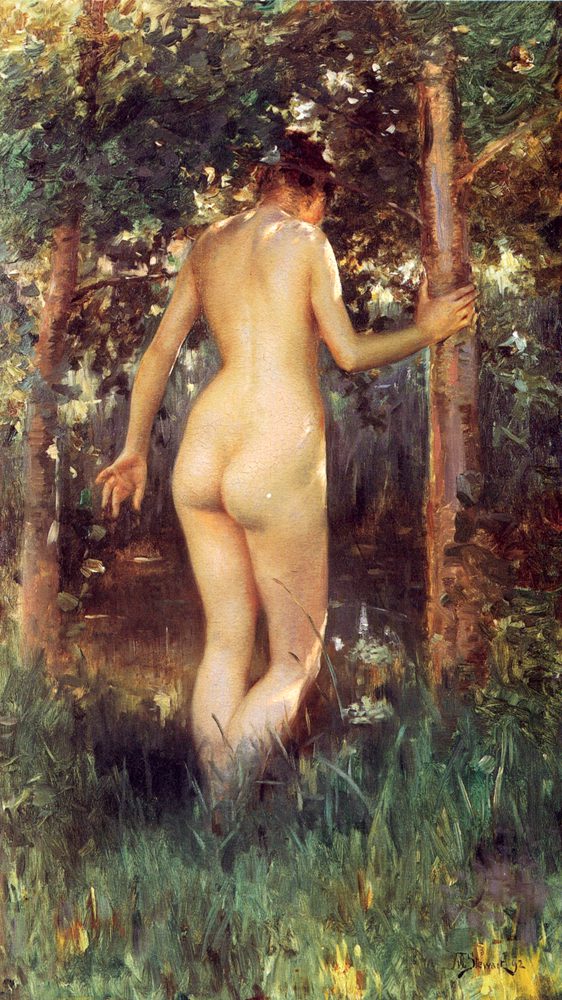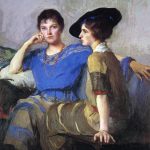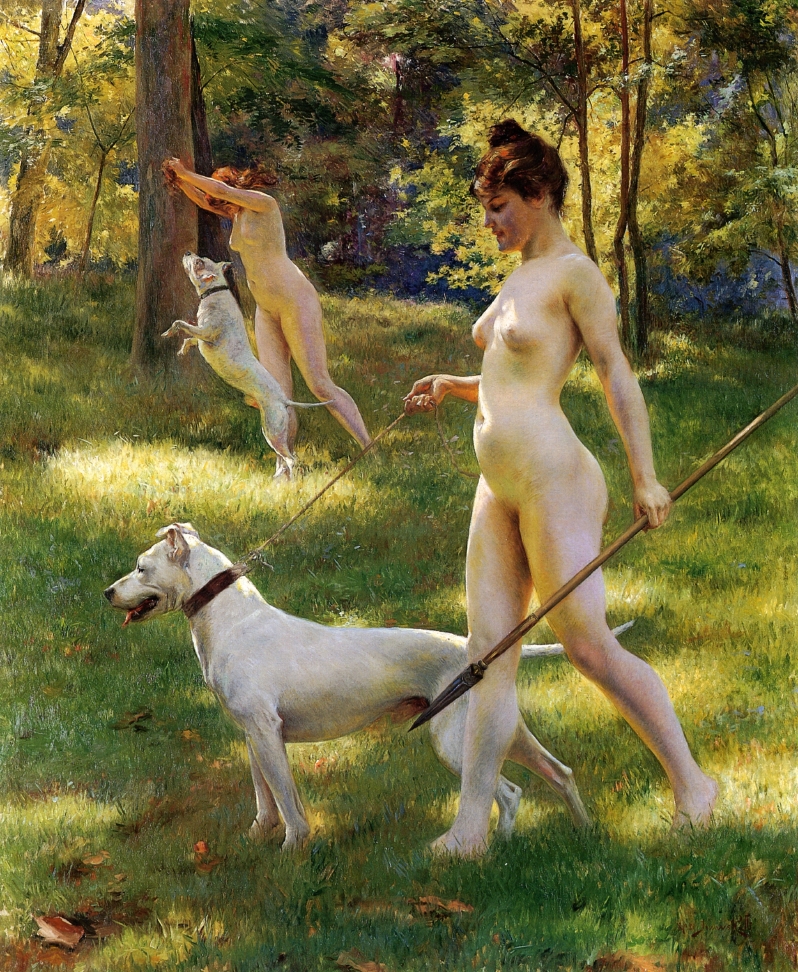
Julius LeBlanc Stewart (1855-1919) was an American-born artist known for his success in the field of academic and salon painting during the late 19th and early 20th centuries. He was born in Philadelphia, Pennsylvania, but spent most of his life living and working in Europe, particularly in France, where he achieved great acclaim for his elegant and sophisticated portraits and genre scenes.
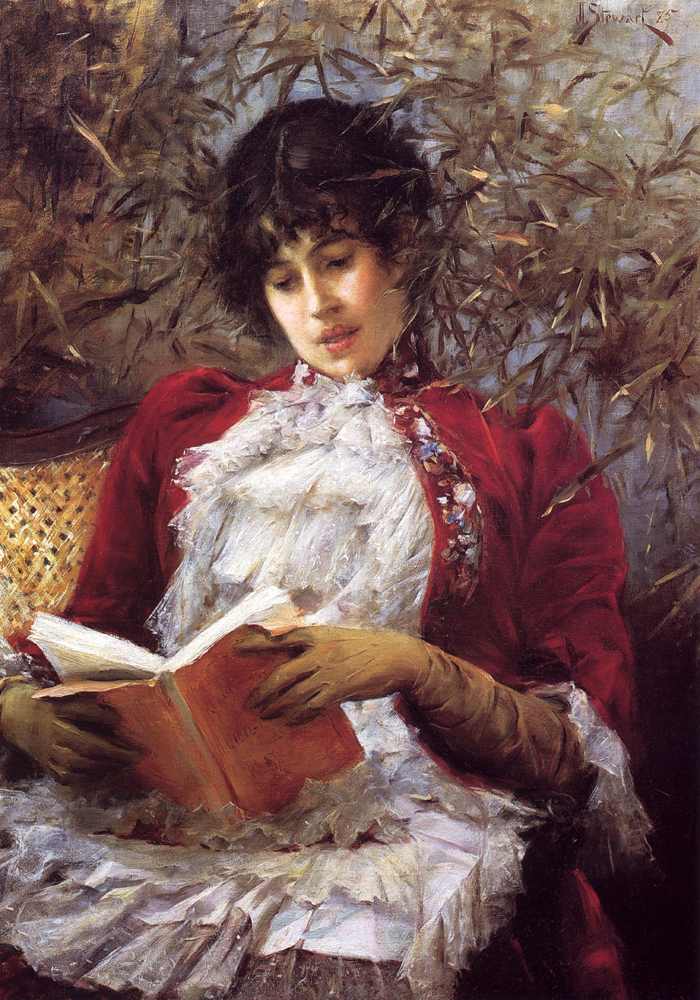
- Early Life and Artistic Education: Stewart came from a wealthy and socially prominent family. He showed an early aptitude for art and received his initial training in Philadelphia before moving to Paris to continue his studies at the École des Beaux-Arts. In Paris, he studied under established artists such as Jean-Léon Gérôme.
- Parisian Career: Stewart’s decision to settle in Paris marked the beginning of his successful career in Europe. He became associated with the academic and salon art movements, which were highly influential during the late 19th century. His work often depicted scenes of upper-class society and luxurious interiors, reflecting the tastes of the Belle Époque era.
- Salon Success: Stewart’s paintings were regularly exhibited at the prestigious Paris Salon, one of the most important art exhibitions of the time. He achieved critical acclaim and won several awards for his work, which included portraits, genre scenes, and depictions of fashionable life.
- Portraiture: Stewart was known for his skillful portraiture, particularly of women and children. His portraits often featured richly detailed settings and captured the elegance and refinement of his sitters. Some of his notable portraits include those of his wealthy American and European clients.
- American Expatriate: Despite his American roots, Stewart spent the majority of his life living in Europe, where he became part of the expatriate artist community. He moved in elite social circles and was well-connected among the European and American upper classes.
- Legacy: Julius LeBlanc Stewart’s works are admired for their technical mastery and ability to capture the opulence and sophistication of the Gilded Age and Belle Époque eras. His paintings remain highly collectible, and his legacy endures as part of the history of American artists who found success and recognition in Europe during the late 19th and early 20th centuries.
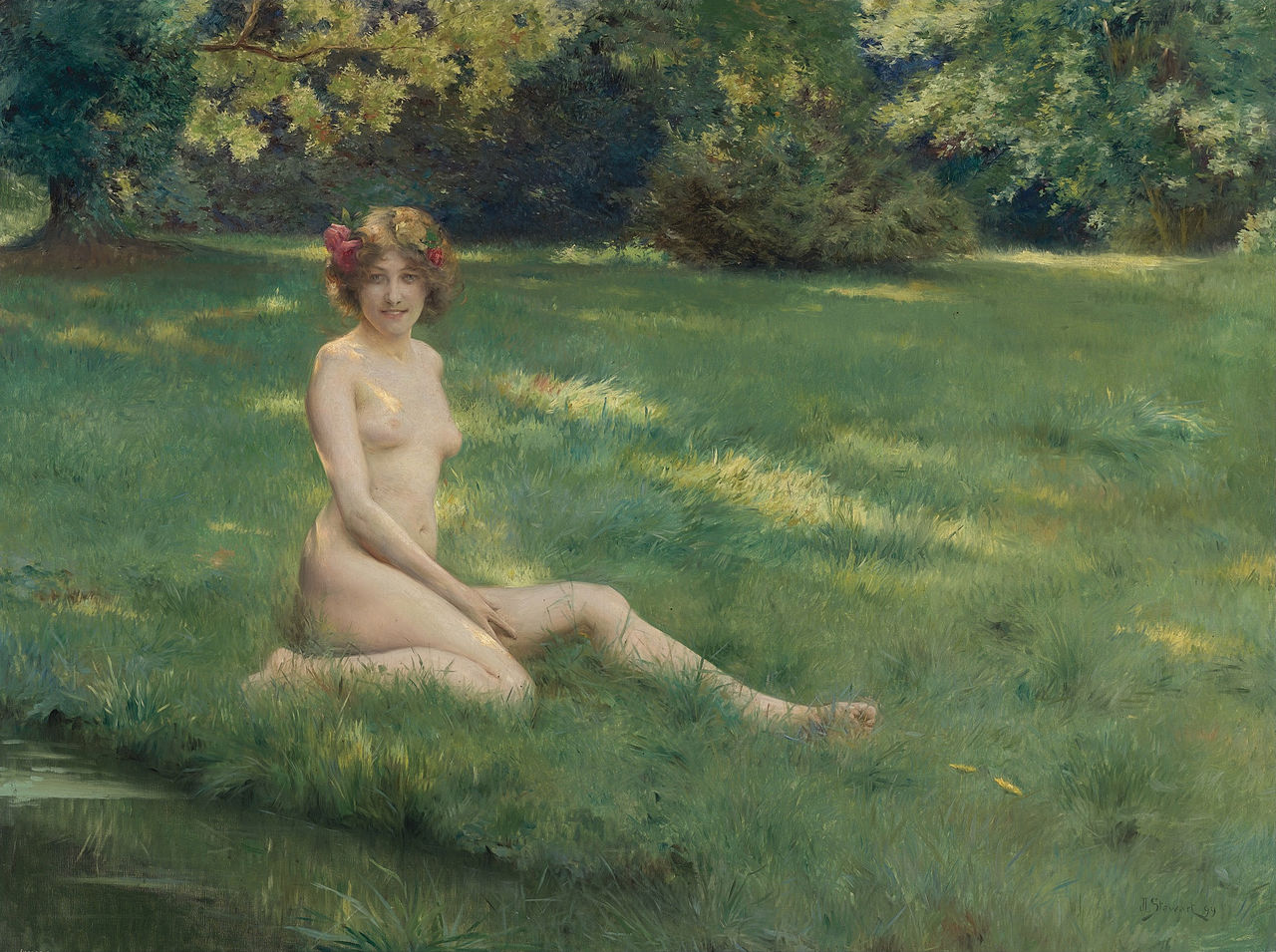
Stewart’s art reflects the cultural and artistic milieu of his time, with a focus on the privileged classes and their opulent lifestyles. His work remains a valuable record of the social and artistic history of the late 19th and early 20th centuries.
